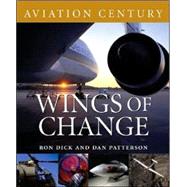
Ron Dick served with the Royal Air Force for 38 years, where his final assignment was as Defence Attach+¬ and Head of the British Defence Staff in the United States. During his career, he .ew 60 types of aircraft, accumulating over 5,000 hours of flight time. He now lectures and writes about aviation history. In addition to the landmark five-volume Aviation Century series, he has co-authored five other books with Dan Patterson. He lives in Fredericksburg, Virginia.
Dan Patterson received the first annual Combs Award, presented by the National Aviation Hall of Fame and business aviation legend Harry Combs to honor a photographer's contribution to the photographic preservation of America's air and space heritage. Patterson's images have been featured in 20 books. He lives in Dayton, Ohio.
| Acknowledgements | |
| Foreword | |
| Foreword | |
| Preface | |
| Introduction | |
| The Safest Way to Fly Personal and Private Lighter than Air | |
| The Wings Rotate At the Frontier | |
| Bibliography | |
| Index | |
| Table of Contents provided by Publisher. All Rights Reserved. |
The New copy of this book will include any supplemental materials advertised. Please check the title of the book to determine if it should include any access cards, study guides, lab manuals, CDs, etc.
The Used, Rental and eBook copies of this book are not guaranteed to include any supplemental materials. Typically, only the book itself is included. This is true even if the title states it includes any access cards, study guides, lab manuals, CDs, etc.